Scientific Foundations
Every aspect of the Neural Sleeve experience has been carefully researched and developed. CIONIC is continually conducting research trials to demonstrate the efficacy of the Neural Sleeve for the treatment of mobility impairment, as well as developing the underlying technology powering the Neural Sleeve.
Clinical trials are ongoing, and data on this page is not fully representative of everyone's experience. To learn more about available research opportunities, visit cionic.com/trials.
Multi-Site Foot Drop Study
Nearly 14% of adults in the US have mobility impairments [cit]. Walking difficulties compromise both physical safety and emotional well-being and can lead to a number of other health complications [cit]. One of the most common mobility impairments is foot drop, which is difficulty in flexing the ankle to lift the foot, due to disruptions to the peroneal nerve [cit]. This causes the front of the foot to drag on the ground during walking [cit], resulting in instability and increasing fall risk [cit].
In our multi site research trial we examined the efficacy of the Cionic Neural Sleeve to assist individuals with foot drop. Participants were outfitted with the Neural Sleeve on their most impacted leg. Stimulation parameters of frequency, pulse width, and amplitude were tuned to elicit activation of the dorsiflexors, and then the user performed back-to-back collections, with and without gait assist stimulation.
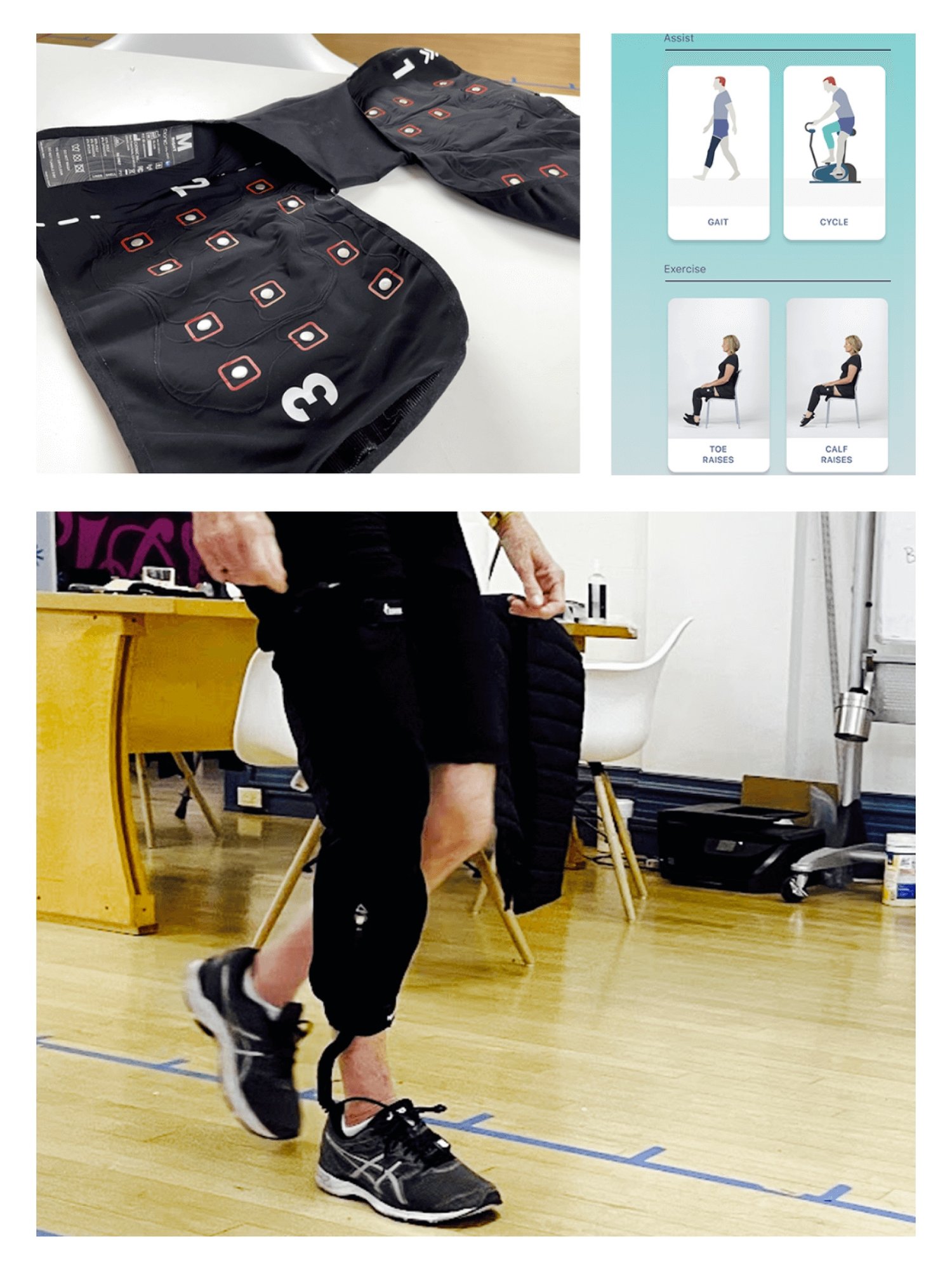
Figure 1. Top left: Cionic Neural Sleeve showing FES and EMG electrodes. Top right: CIONIC application interface for setting FES parameters (frequency, pulse width, intensity) and current field steering. Bottom: Participant with sleeve on affected limb on marked walkway.
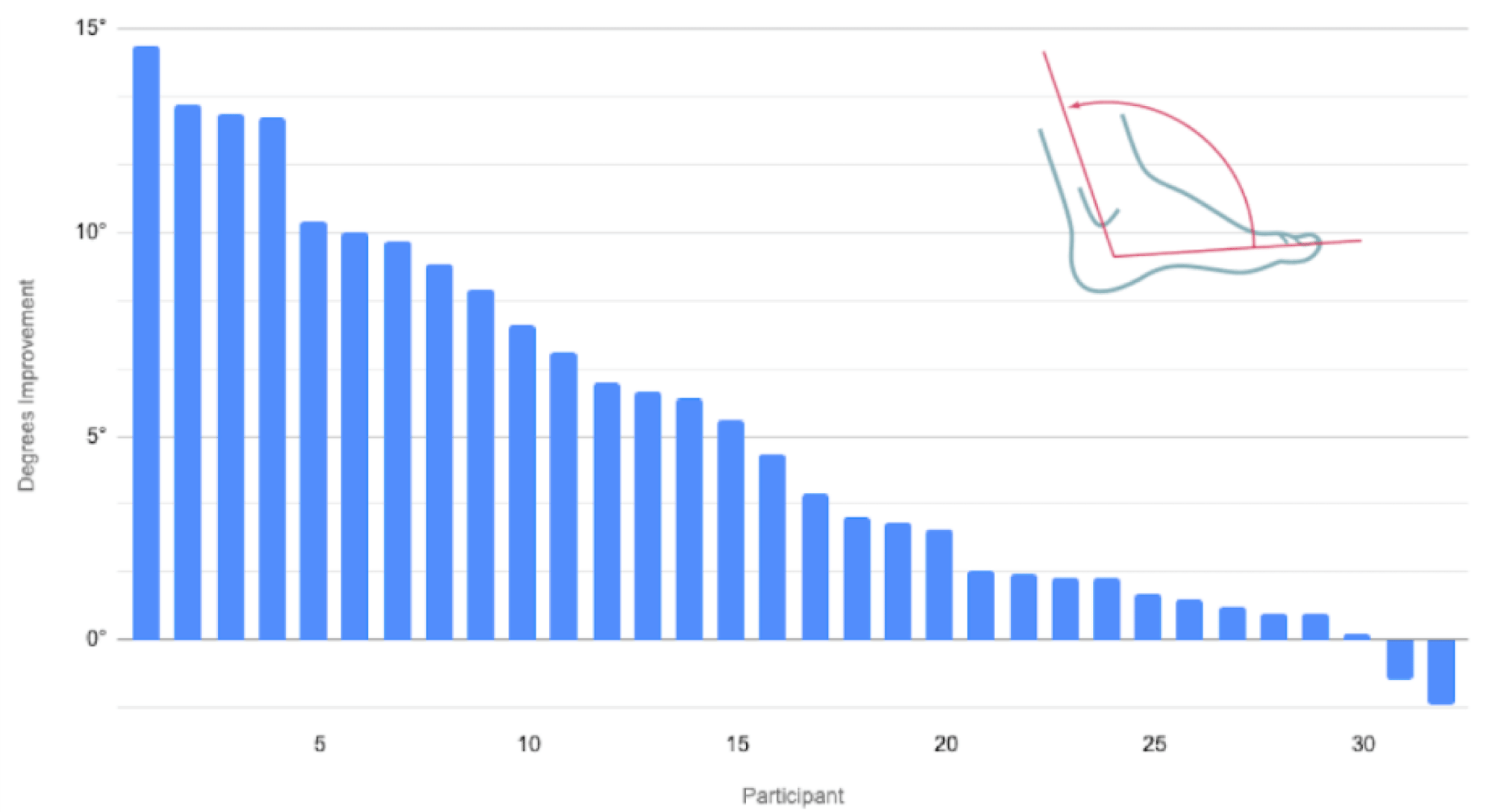
Like many studies on foot drop, our primary endpoint was increasing ankle dorsiflexion at heel strike for improved foot clearance.
In back-to-back paired tests, 94% of participants showed positive increase to dorsiflexion at heel strike.
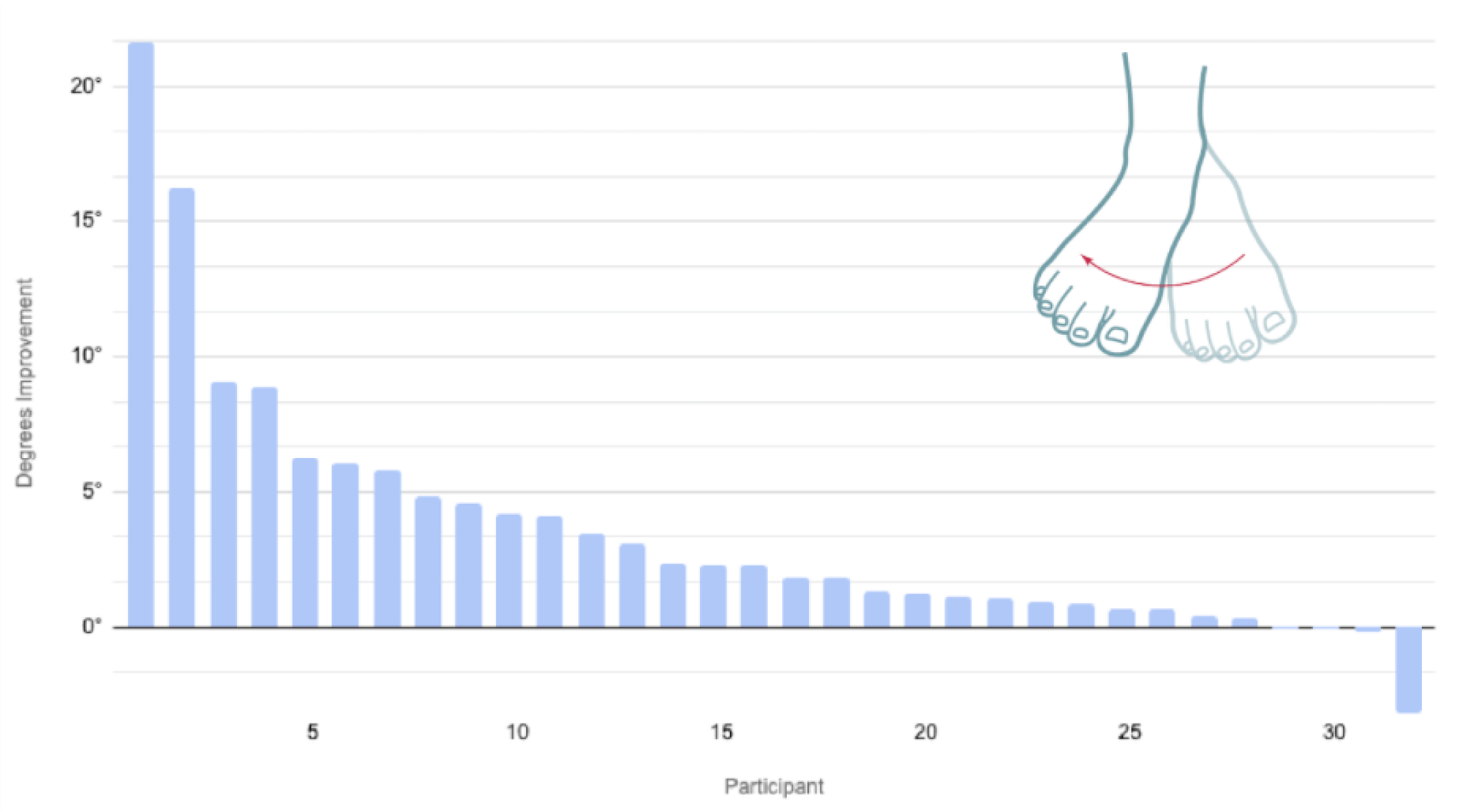
But ankle dorsiflexion is only part of the story. Many individuals with foot drop also exhibit excessive ankle inversion, which can cause the foot to land on the outside, risking ankle injury and falls.
Our first-of-its-kind software steerable stimulation array enables the Cionic Neural Sleeve to balance increases in dorsiflexion with reduction to inversion.
88% of participants showed a positive improvement to ankle inversion during swing.
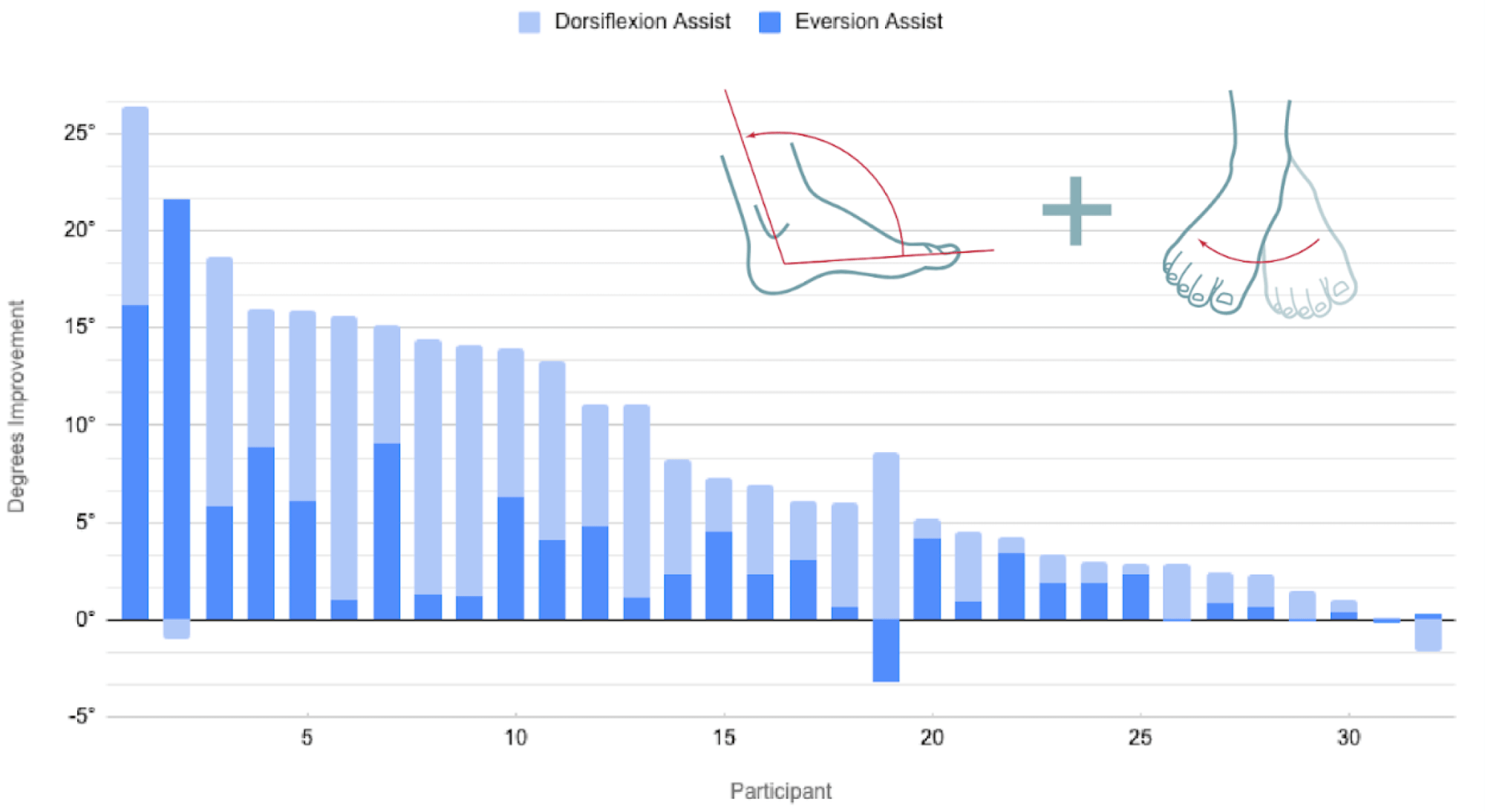
Every individual is unique: some require greater assistance in increasing dorsiflexion, while others need more help reducing inversion. Stacking together the improvements to both these metrics for each participant, we see a more comprehensive picture of the impact of the Cionic Neural Sleeve for individuals with foot drop.
Our gait assist trial demonstrated an average combined improvement of 9° across all participants.
For full study results, review the original publication in the
Journal of Novel Physiotherapies.
Pilot Study - Multiple Sclerosis Gait
In a pilot study, we examined the impact of the Neural Sleeve on two key measures that impact gait for individuals with multiple sclerosis (MS). Published in May 2024 in the International Journal of MS Care, the real-world study "Impact of the Cionic Neural Sleeve on Ankle Kinematics during Gait in Multiple Sclerosis" evaluated the impact of CIONIC's proprietary array-based stimulation approach to address ankle instability in MS gait and specifically foot drop.
The study evaluated two key measures related to difficulties with walking: decreased dorsiflexion, or difficulty lifting the foot, and increased inversion, or the tendency for the ankle and foot to roll inward. Results of the study demonstrated significant improvements for both measures, and all participants experienced improvements to dorsiflexion at heel strike and reductions in inversion during swing when functional electrical stimulation from the Cionic Neural Sleeve activated the affected muscles.
Read the full report at IJMSC
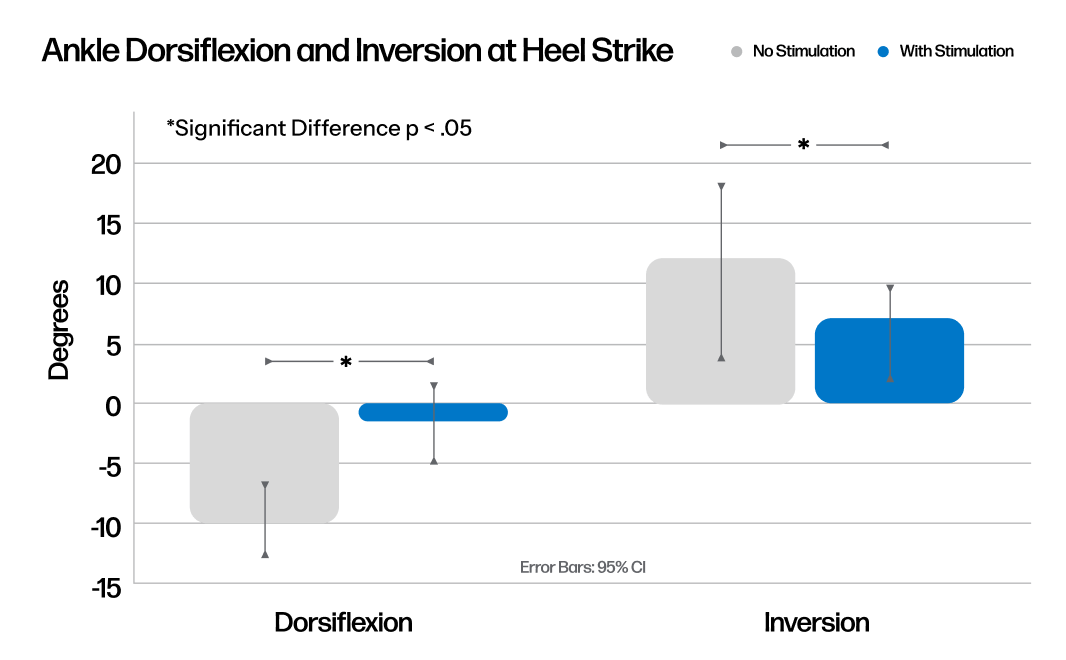
Technological Breakthroughs
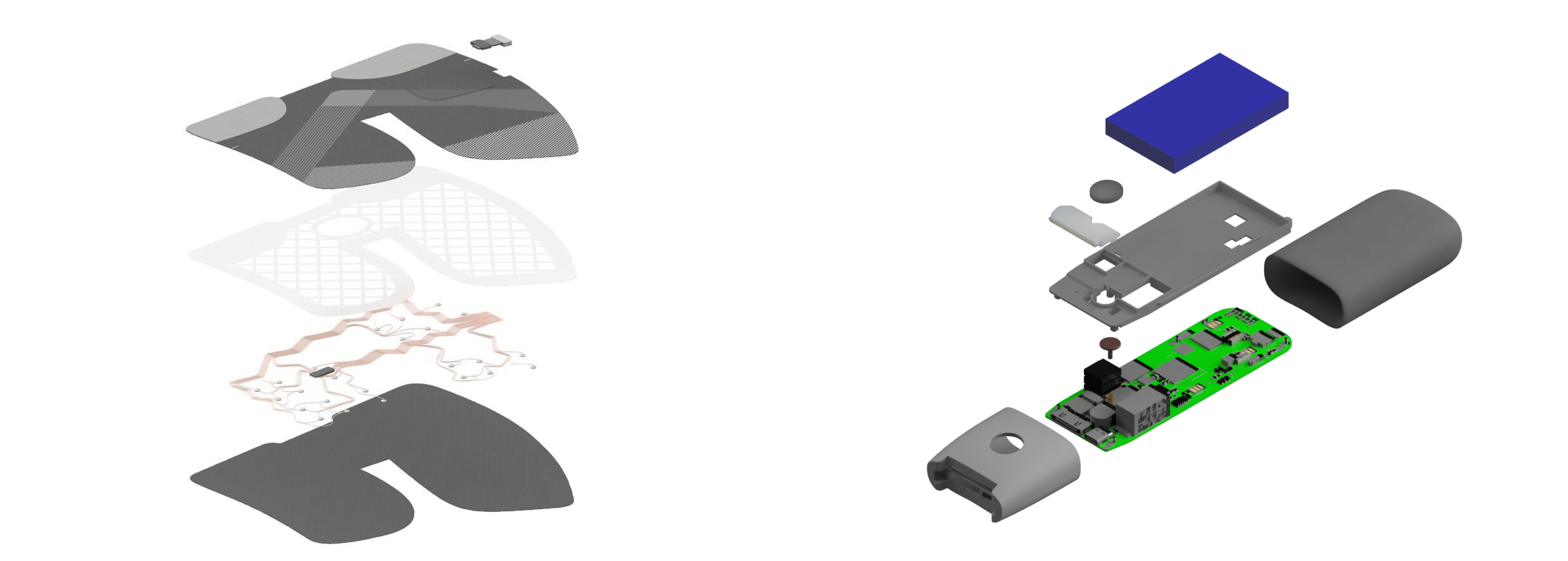
Figure 3. Left: Multi-dimensional Neural Sleeve design includes flexible wirebus integrated into the lightweight, breathable fabric. Right: Control Unit connects to the Neural Sleeve and is the wireless communication hub between the CIONIC App and Neural Sleeve.
Advanced Application of Electrical Stimulation for Modern Design
In the realm of electrical stimulation, existing technologies often fall short due to their bulky, monolithic designs and limited compatibility with external systems. These devices, constrained by wired connections, hinder usability and fail to offer the flexibility needed for advanced applications such as motor rehabilitation and cardiovascular conditioning. Our paper addresses these challenges by presenting the design of a programmable and modular neuromuscular electrical stimulator integrated into a wireless body sensor network. This innovative solution offers wireless modules that can be easily programmed and interfaced with third-party devices, enabling concurrent multi-site stimulation and significantly reducing cable clutter. Our device sets a new standard in neuromuscular stimulation, providing a versatile, efficient, and user-friendly option for both clinical and research applications.
Read more about the technical challenges we overcame to develop the Neural Sleeve in IEEE Xplore
Take the Next Step
See if the Cionic Neural Sleeve is right for you